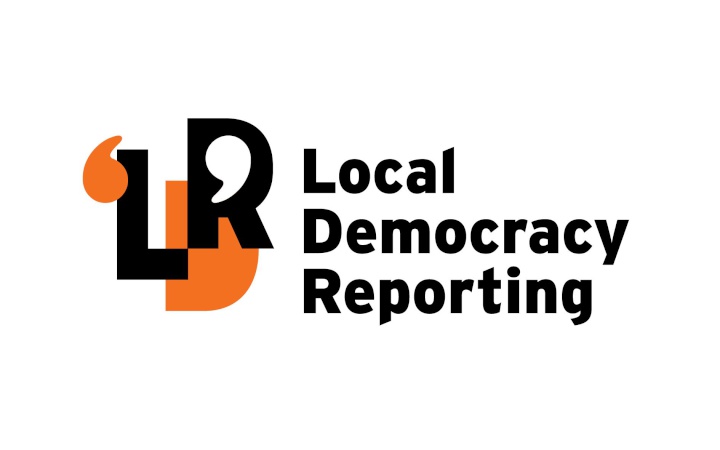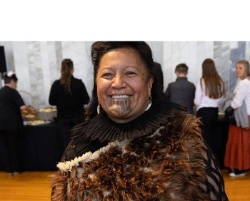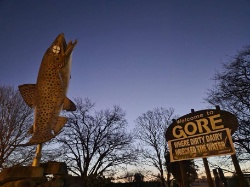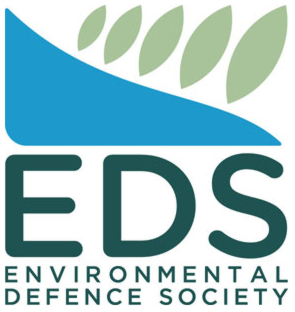A long and fraught journey to upgrade Featherston’s wastewater treatment plant has reached a significant milestone, with a 10-year consent application now resting in the hands of commissioners.
But some Featherston residents remained concerned that 97% of the town’s treated wastewater would continue to be discharged into waterways, should the consent be approved.
A three-day hearing totalling about 20 hours was adjourned on Wednesday, with further discussions over consent conditions still to take place between South Wairarapa District Council and the consenting authority Greater Wellington Regional Council.
Currently, 100% of Featherston’s treated wastewater was discharged to Donald’s Creek which feeds into Lake Wairarapa.
This was seen as “culturally atrocious” by iwi and continued discharge to waterways was inconsistent with the aims of the National Policy Statement for Freshwater Management.
The district council’s proposal was to upgrade inlet screens at the treatment plant, improve equipment in the oxidation pond, introduce a new clarification system such as a Dissolved Air Flotation (DAF) to reduce sediment and contaminants in the wastewater, and a construct a wetland and revegetated area, improving the quality of discharged treated wastewater.
The consent would also allow time to trial and implement a discharge to land process using trickle irrigation on up to seven hectares of council-owned land at Hodder Farm.
This trial would inform a longer-term consent shifting towards more discharge to land.
Commissioners heard from experts representing each council and also submissions from the public, including former South Wairarapa deputy mayor Garrick Emms and Marguerite Tait-Jamieson.
The couple said they were “angry” that $17 million would be spent on wastewater treatment upgrades that would shift just 3% of treated wastewater to land-based disposal by 2032.
Emms, and other submitters said the council-owned Hodder Farm, where the trials would be done, had a high groundwater table, was prone to flooding, was unsuitable for long-term discharge of treated wastewater, and potentially unconsentable for wastewater discharge in the future.
Documents supporting the consent application said during the trial, treated wastewater would only be discharged to land when the soil was dry enough to do so, which was only for 30% of the year.
Emms said commissioners should “reject the whole thing” and that South Wairarapa District Council should “go and look for some other land” where higher volumes of treated wastewater could be discharged to instead of land “in the middle of a floodplain”.
“It’s not brain surgery to get out of this and go looking for somewhere better,” Emms said.
“Anything to get wastewater out of Donald’s Creek has to be good, but 3% for $17m?”
Submitters were also concerned that inflow and infiltration issues would not be addressed within the scope of the consent.
Commissioners heard that major wastewater inflow and infiltration issues persisted in Featherston which resulted in an average daily wastewater flow of more than 1500 litres per person per day.
Expert witness Oliver Hunt said normal per capita wastewater flows would be “in the order of 200-250 litres per person per day”.
Tait-Jamieson said even if inflow and infiltration issues were fixed, the proposed wastewater solution was “still not satisfactory” as waterways were still being discharged to.
Submitter Claire Bleakley said the amount of treated wastewater that would continue to be discharged to waterways was “distressing” and would only continue to degrade the “dying” Lake Wairarapa.
She described the 10-year consent proposal as “a plaster trying to mitigate the worst of the effects”.
Earlier in the hearing, South Wairarapa District Council’s expert witnesses described the wastewater treatment upgrade proposal as a middle ground the community could afford which would improve environmental impacts while collecting information that would inform the development of a longer-term solution.
When wrapping up the hearing on Wednesday, commissioner Mark Ashby said he and his fellow commissioners Logan Brown and Rawiri Faulkner would “try to do their best by the environment and the community” in making their decision.
The Featherston Wastewater Treatment Plant has been operating under a historic resource consent since 2012, when the existing consent expired.
In 2017, the community pushed back on a previous consent application to progressively move to discharging the town’s UV-treated wastewater to land rather than waterways.
LDR is local body journalism co-funded by RNZ and NZ On Air



 Gordon Campbell: On Why The Free Market Is A Scam, Plus The Epstein Saga
Gordon Campbell: On Why The Free Market Is A Scam, Plus The Epstein Saga Te Pāti Māori: More Mokopuna Made Homeless In Te Tai Tokerau, Kia Ora E Tama
Te Pāti Māori: More Mokopuna Made Homeless In Te Tai Tokerau, Kia Ora E Tama Green Party: Greens Launch Petition For Regional Passenger Rail
Green Party: Greens Launch Petition For Regional Passenger Rail Taxpayers' Union: NEW POLL | The Best (And Worst) Big-City Mayors
Taxpayers' Union: NEW POLL | The Best (And Worst) Big-City Mayors Greenpeace: Gore’s Iconic Brown Trout Statue Latest Victim Of Township’s Drinking Water Crisis
Greenpeace: Gore’s Iconic Brown Trout Statue Latest Victim Of Township’s Drinking Water Crisis Environmental Defence Society: Another Offensive Launched In The Government’s War On Nature
Environmental Defence Society: Another Offensive Launched In The Government’s War On Nature Office of Ethnic Communities: New Zealand’s Muslim And Jewish Organisations Join As Signatories To The Harmony Accord At Government House
Office of Ethnic Communities: New Zealand’s Muslim And Jewish Organisations Join As Signatories To The Harmony Accord At Government House


